Preservationists wisely began to realize a heroic rescue to Lille’s culture and historic center in the 1960s after the devastation caused by two world wars and the closing of several important coal mines and textile mills in the region. Removing the stucco that revealed the colorful Flemish brick and stone facades on many of its buildings was excuse enough for high-end shops and restaurants to move into the center of town, reviving the area around the Grand’Place and what is known today as la vieille ville. The arrival of the high-speed train in 1993 was a boon to the city, connecting Paris to Lille in just an hour. Brussels, the seat of European government, is a mere 35 minutes from Lille by train. Named the European Cultural Capital in 2004, Lille spent some €73 million—the largest sum ever for a single cultural operation in France—and invested another €55 million to reinvent itself. The results are startling.
Useful landmarks for a visit:
– The Place du Théâtre, dominated by the ornate Opera House and the imposing Chamber of Commerce building
– the Rang du Beauregard, a row of lovely brick-and-stone buildings dating from the XVII c.
– the center of the town officially called La Place Gaulle but known more affectionately as la Grand’Place. Marked by a column 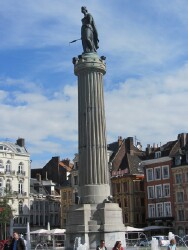 supporting a statue of the Déesse du boutefeu in honor of the heroism of the citizens under siege by the Austrians in 1792, the Place is the heartbeat of the city and an important gathering place.
supporting a statue of the Déesse du boutefeu in honor of the heroism of the citizens under siege by the Austrians in 1792, the Place is the heartbeat of the city and an important gathering place.
– The Place Rihour is just behind the Grand’Place and its beautiful formal palace currently harbors the Tourist Office.
– The jewel of museums is the Palais des Beaux-Arts, second in France only to the Louvre in Paris. A rich collection of statues and painting adorn the interior; its recent 6-year renovation shows off its collection brilliantly, set against the colorful walls. There is a stunning exhibit currently running entitled The Tower of Babel.
– A surprising museum in nearby Roubaix, La Piscine is a former municipal art-deco swimming 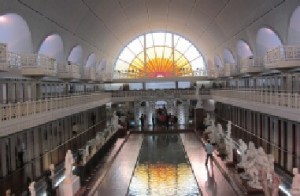 pool turned art museum, housing a beautifully eclectic collection of sculpture, 20th century art works, ceramics, porcelain and stained glass.
pool turned art museum, housing a beautifully eclectic collection of sculpture, 20th century art works, ceramics, porcelain and stained glass.
– An enormous modern art museum, the LAM, presents a brilliant collection of both 20th and 21st century art, rivaling modern art collections throughout Europe.
– Lille 3000: Every 18 months, Lille hosts an art bonanza like no other. During a 6-month period, shows, exhibits, concerts, dance, food, all all engaged in an enormous theme. This year it is devoted to FANTASY, with events taking place from October 6, 2012 to Jan 13, 2013. If you have a chance to visit Lille during this period, be sure to check out the events: http://www.lilletourism.com/document/fantastic_preprogramme_fr.pdf
– Les marchés: 14 outdoor markets are held weekly in Lille and its metropolis, each different and unique. One of the most popular is the one on Sunday mornings in Wazemmes. City hall has an excellent list of its marches: http://www.mairie-lille.fr/fr/Vie_economique/halles-marches
– Gare St-Sauveur: former freight rail station turned exhibit hall, this trendy local has reinvented itself. Open day and night all year round, it’s a hot spot of energy, exhibits, game rooms and atmosphere. Complete with hotel and lounge.
– The Pâtisserie Meert on rue Esquermoise, is an institution in Lille. Founded in 1761, it is best known for its vanilla-cream-filled gaufre, a very thin, flat waffle, served in a stunning 19th century tea room, replete with chandeliers and wrought-iron balconies. http://www.ina.fr/art-et-culture/gastronomie/video/I07268594/la-patisserie-meert-a-lille.fr.html
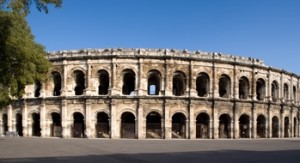
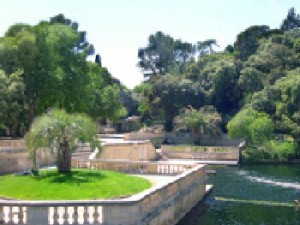
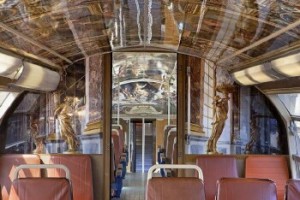
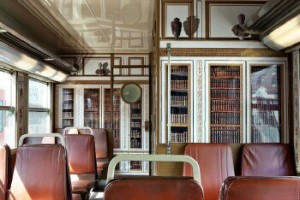
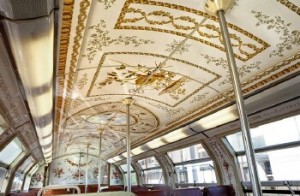
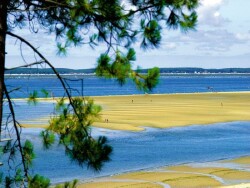 On the Atlantic coast not far from Bordeaux lies the beautiful seaside town of Arcachon, well-known for its oyster culture, its fishing harbor, and its bathing resort where sea winds mix with the fresh scent of pine trees from the nearby forest of the Landes.
On the Atlantic coast not far from Bordeaux lies the beautiful seaside town of Arcachon, well-known for its oyster culture, its fishing harbor, and its bathing resort where sea winds mix with the fresh scent of pine trees from the nearby forest of the Landes.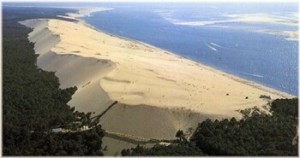
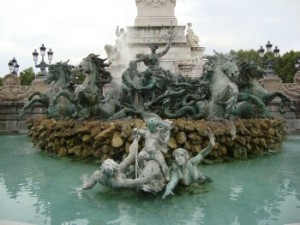
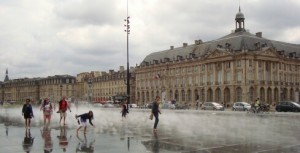
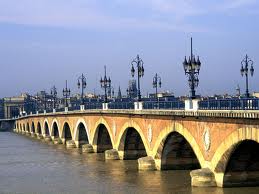 Part of the enchantment of the city of Bordeaux is its fascinating history. In addition to its excellent location on the Garonne River at the mouth of the Gironde estuary, its turbulent but compelling past may be summed up in three stages:
Part of the enchantment of the city of Bordeaux is its fascinating history. In addition to its excellent location on the Garonne River at the mouth of the Gironde estuary, its turbulent but compelling past may be summed up in three stages: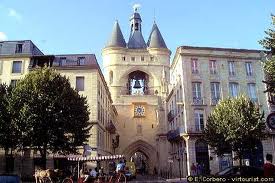
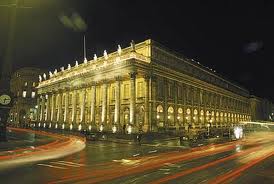
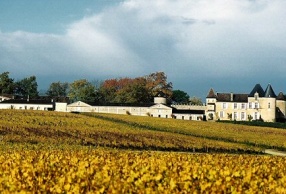 The best known vineyard in Sauterne region is the beautiful Chateau d’Yquem which once belonged to Eleanor, Duchess of Aquitaine. After she and King Louis VII of France divorced and she married Henry Plantagenet, the future King Henry II of England in 1154, the chateau came under British dominion until the end of the Hundred Years War in 1453, a most royal and British estate. Back under French control in 1593, the chateau has been improved and modified several times under the watchful eye of the Sauvage and Lur-Saluces families, and has produced award-winning wines over the centuries. Thomas Jefferson bought several cases in 1784, proclaiming it the best wine of Bordeaux. Today partially owned by the luxury marketing group LVMH, it possesses approximately 226 acres of vineyards, although not all are in production at any one time, allowing for elimination of elderly vines and replanting in fallow plots. The mix of the grapes is 80% Semillon and 20% Sauvignon Blanc, with none of the permitted Muscadelle. The grapes are harvested by hand in several different batches and fermented in oak, usually about three years per barrel.
The best known vineyard in Sauterne region is the beautiful Chateau d’Yquem which once belonged to Eleanor, Duchess of Aquitaine. After she and King Louis VII of France divorced and she married Henry Plantagenet, the future King Henry II of England in 1154, the chateau came under British dominion until the end of the Hundred Years War in 1453, a most royal and British estate. Back under French control in 1593, the chateau has been improved and modified several times under the watchful eye of the Sauvage and Lur-Saluces families, and has produced award-winning wines over the centuries. Thomas Jefferson bought several cases in 1784, proclaiming it the best wine of Bordeaux. Today partially owned by the luxury marketing group LVMH, it possesses approximately 226 acres of vineyards, although not all are in production at any one time, allowing for elimination of elderly vines and replanting in fallow plots. The mix of the grapes is 80% Semillon and 20% Sauvignon Blanc, with none of the permitted Muscadelle. The grapes are harvested by hand in several different batches and fermented in oak, usually about three years per barrel.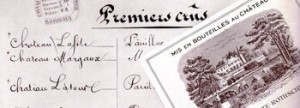
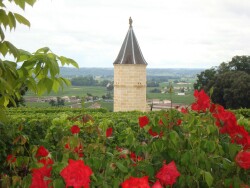
 Actually, it is. The movie was filmed in the real village called Bergues, situated just a few miles south of Dunkirk. Here you can visit most of the places seen in the movie: the bell tower in the town square, the outdoor café where Philippe crashes his bike, the lingerie shop where Philippe runs into famous French actress Line Renaud (who plays Dany Boon’s mother in the movie), and the restaurant at which one of the funniest scenes in the movie takes place.
Actually, it is. The movie was filmed in the real village called Bergues, situated just a few miles south of Dunkirk. Here you can visit most of the places seen in the movie: the bell tower in the town square, the outdoor café where Philippe crashes his bike, the lingerie shop where Philippe runs into famous French actress Line Renaud (who plays Dany Boon’s mother in the movie), and the restaurant at which one of the funniest scenes in the movie takes place.